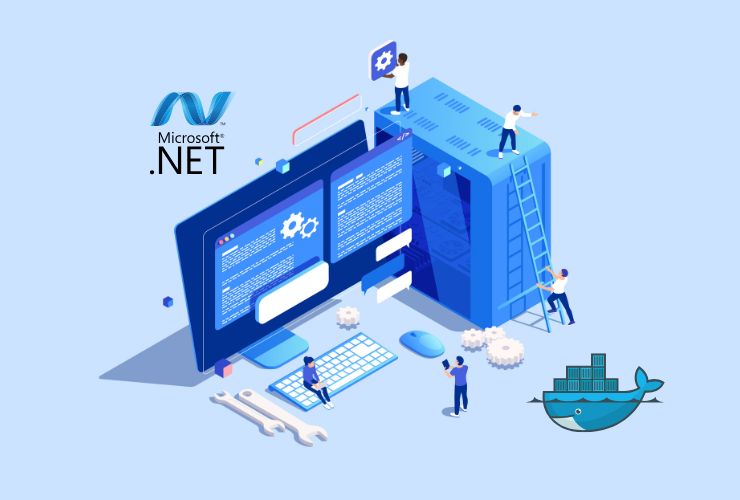While Classic ASP, a legacy technology, may be outdated, there are still thousands of businesses who continue to depend on it to maintain stable and mission-critical websites. The challenge is finding ways for these legacy sites to remain competitive in today’s SEO-driven digital economy. The ranking algorithms from Google now value speed, mobile-friendly, structured data, and secure browsing, which can be more challenging for Classic ASP websites if they are not developed and maintained correctly.
The good news is that Classic ASP websites will still rank well when performed with modern SEO strategies. In this extensive guide, we will discuss some of the best techniques to improve the ranking, speed, and user experience of Classic ASP websites.
1. Improve Website Speed for Better Rankings
Page speed is one of the top ranking factors for Google. Classic ASP websites suffer from slow server response, outdated code, and inefficient database queries.
How to Optimize Performance –
Optimize your database queries
- Use indexes
- Stop selecting unnecessary data
- Use stored procedures
- Cache frequently-accessed data
Implement server-side caching on:
- page output
- database results
- session-based content
Compress your HTML output (via IIS, for example) to reduce overall data transfer.
Minimize HTTP requests
2. Make Your Classic ASP Website Mobile-Friendly
Google is currently using a mobile-first index, therefore your mobile site is more effective in terms of ranking than the desktop site.
Best-Practices for Mobile Optimization
- Responsive CSS frameworks such as Bootstrap or Tailwind are helpful
- Mobile-optimized images
- Heavy, table-based layouts should be avoided
- Tap targets, buttons, and text should be readable
- Test with Google’s Mobile-Friendly Test
Even older Classic ASP sites can now implement modern CSS easily, without any changes made on the backend.
3. Use Clean/SEO-Friendly URLs
Classic ASP URLs often have query parameters in them, which are not beneficial for SEO.
SEO-Friendly URL Practices
- Use IIS URL Rewrite to convert query parameters into clean URLs
- Use readable slugs as URLs rather than an incrementing numeric Id
- Avoid duplicate or dynamically created URLs
Clean URLs help with search rankings and increased click-through rates.
4. Optimize Meta Tags and On-page SEO
Classic ASP allows for full control over HTML, so on-page SEO is easy.
Must-Have Meta Elements
- Unique and keyword rich title tags
- Compelling meta description
- H1 tags
- Canonical tags
- Social media Open Graph tags
Optimizing Content
- Use keywords naturally
- Write clear product/service descriptions
- Include FAQs to support rich snippets
- Avoid keyword stuffing
Mention both static and dynamic ASP pages can use this methods.
5. Use Structured Data (Schema Markup)
Structured data enables search engines to better comprehend your content, while also presenting richer results.
Outlined below are some helpful schema types:
- Organization
- Local Business
- Product
- FAQ
- Article
- Breadcrumb
Structure data can be added to the headers of your page to better contribute to search visibility and increase your click-through rates.
6. Resolve Duplicate Content
Classic ASP sites can inadvertently create duplicate content due to URL parameters; therefore, it is best to resolve any duplicate content found on your site.
Ways to Prevent Duplicate Content:
- Implement canonical tags
- Use URL rewriting so they are consistent
- Block duplicate URLs in robots.txt
- Session IDs should not appear in the URL
Fixing duplicate content can raise site rankings in search results and helps with crawling.
7. Increase Security for Better SEO
There is a direct impact concerning security in relation to industry trust, user experience, and search engine rankings.
Security best practices include:
- Ensure you have HTTPS installed and enforced
- Protect against SQL injection
- Only use parameterized queries
- Disable verbose error messages
- Always have the latest version of the IIS and server software
Having a secure site improves your credibility with both users and search engines.
8. Optimize Images and Media
Images can significantly hinder the loading speed of Classic ASP websites when they are not optimized or large-sized.
Things to consider for image optimization include:
- Converting images so they are newer formats (WebP)
- Compressing images to a reasonable size
- Using CDN (content delivery networks)
- Add descriptive alt-tags
Improving images and other media files can enhance website load speed and accessibility.
9. Building An XML Sitemap
Classic ASP does not generate a sitemap automatically, but you certainly can create one using your own effort or script. Here is what Google is looking for:
- Sitemap at /sitemap.xml
- Clean and crawlable URLs.
- An up-to-date listing of your pages.
Once created, you can submit your sitemap to Google Search Console for better indexing.
10. Enhance Your Internal Linking Structure
Internal links are essential to help Google crawl your web pages effectively and also to distribute ranking value among your website pages.
Internal Linking Best Practices are:
- Link to related content, whenever you can.
- Use Breadcrumbs
- Be Consistent in URLs (URL Format)
- Use descriptive anchor text.
Having a well-organized internal linking structure provides a better site experience and better SEO.
Conclusion
SEO of Classic ASP websites may seem regrettably challenging, but with some optimization efforts, it is still possible for these antiquated PHP applications to represent some level of search visibility. Improved performance, clean URLs, well written meta-tags, structured data, enhance your site for mobile responsiveness, and secure a stronger online property are all ways to bring your Classic ASP site to modern SEO standards.
Whether you are operating an existing Classic ASP system or planning out a rebuild, all ideas above will keep your website competitive, fast and visible in today’s search based digital ecosystem.











